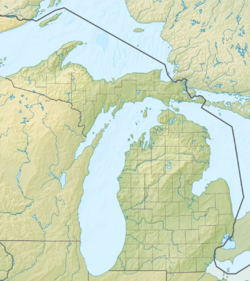| Tippy Dam | |
|---|---|
 Tippy Dam (July 2017) | |
| Location | Dickson Township, Manistee County, Michigan |
| Coordinates | 44°15′36″N85°56′25″W / 44.26009°N 85.94014°W |
| Opening date | 1918 |
| Dam and spillways | |
| Impounds | Manistee River |
Tippy Dam or Tippy Hydro was built in 1918, and is a hydroelectric dam operated by Consumers Energy. The original name of the dam was Junction Hydro, but it was renamed to honor a Consumers board of directors member, Charles W. Tippy. The dam spans the Manistee River about 170 miles west from its headwaters, and approximately 20 miles east of its mouth with Lake Michigan, which includes Manistee Lake in Manistee as well. [1]
